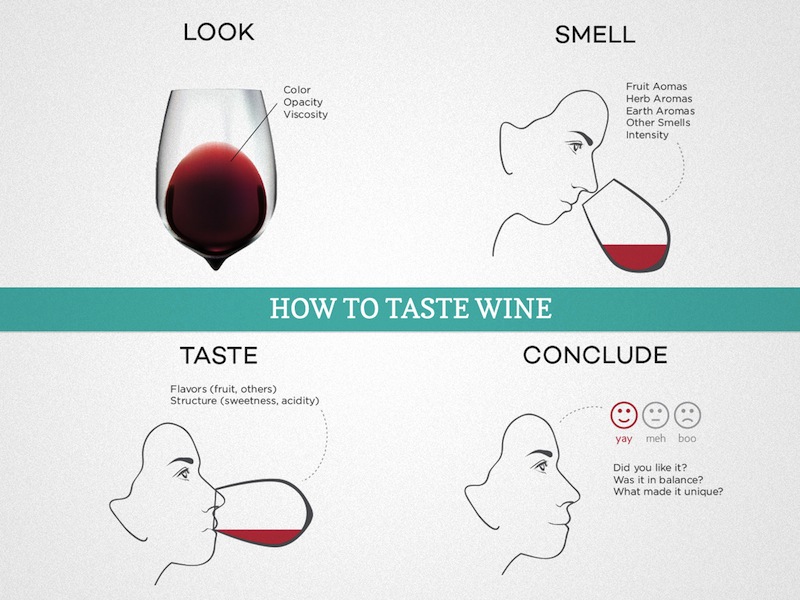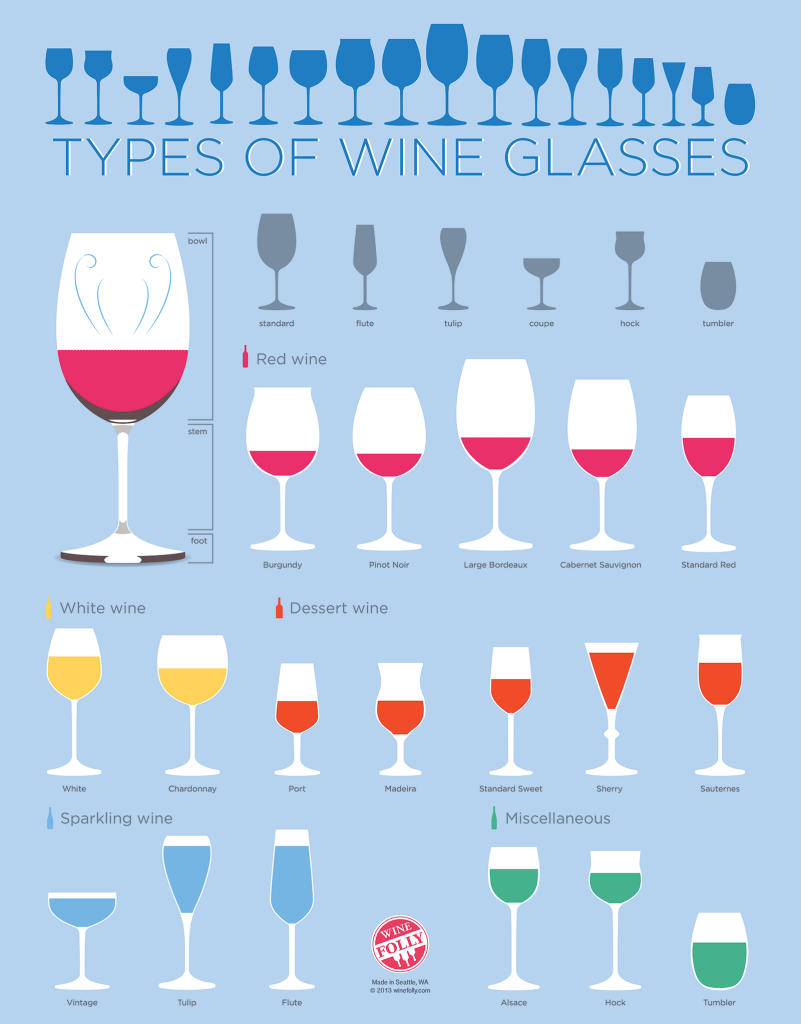Want to start your journey with wine? This basic knowledge and understanding will guide you in how to discover your palate and enjoy your exploration to select, buy, and serve wine confidently.
Understanding Wine
Wine is an alcoholic beverage made from wine grapes (Latin name Vitis Vinifera) by the fermented grape juice. There are over 1,200 grape varieties in the world but only around 100 of these varieties occurred 75% of the world’s vineyards. Up to type of grape, vintage, and winemaking technical defines the taste experience. Cabernet Sauvignon is the most planted type of grape in the world, Syrah, and Merlot follow it, and Pinot Noir and the most popular white grape varieties are Chardonnay, Sauvignon Blanc, and Pinot Gris/Grigio.
What is Vitis Vinifera?
Vitis vinifera is known as wines made from a specific type of grapes, they are different from the grapes we eat as fruit (table grape). They are smaller, more concentrated, and have less moisture than table grapes. The grapes need to be fermented into alcohol so they are normally sweeter and have thicker skin. Vitis vinifera can be black or bronze skin and makes red or white wine respectively.
Main Type of Wine
Wine can be broken down into 5 main types, there are hundreds of different grape types and winemaking techniques within each type.

Red Wine
Red wines range from dry to sweet and are made from black-skinned grapes. Cabernet Sauvignon, Cabernet Franc, Syrah, Merlot, Malbec, Grenache, and Pinot Noir are all important red wine grape varieties. Red wines get their color from the juice being left in contact with the skin during the winemaking process.
White Wine
The important white wine grape varieties are Sauvignon Blanc, Chardonnay, Riesling, and Pinot Gris/Grigio, which are made from bronze-skinned grapes, occasionally black grapes. In white wines, the flavors range from light to rich and dry to sweet.
Rosé Wine
Rosé wines (or Blush wine) are made mostly from black-skinned grapes by removing the skins before they taint the wine deep red or from a mix of bronze and black-skinned grapes. Rosé wines are popular in both dry & sweet styles.
Sparkling Wine
Sparkling Wine can be red, white, and rosé but the most common is whites and rosés. The bubbles come from secondary fermentation, they can range from dry, to rich and sweet. Sparkling wines are made from the wine-making technical and various famous grape types such as Champagne, Prosecco, Cava, and Sekt among others.
Dessert Wine
Dessert wines mostly taste sweet but also have many dry, fortified aromatized wines that exist such as Sherry, Port, and Vermouth which are made by involving neutral grape spirits in wine.
What is Vintage?
The vintage refers to the year that the wine grapes were harvested. Wines can be classified as vintage or non-vintage. Non-vintage wines will be labeled as NV or simply have no vintage listed, whereas vintage wines will have a date listed on the label. A vintage is listed on the majority of red, white, and rosé wines. Vintage and non-vintage wines include sparkling wines, fortified wines such as Port, and some dessert wines.
Tasting and Drinking Wine
In wine tasting, there are several key aspects that need to know:
Body refers to the viscosity of the wine
Acidity refers to sour or tart flavor in wine
Tannin describes astringency & bitterness are added to the wine and give the wine the aging ability.
Alcohol is the result of fermentation, adding the “hotness” to the wine. Alcohol measuring is followed by volume or ABV, which ranges from about 5.5% to 23% for some fortified wine.
Sweetness & Dry describes how we taste the sugar in the wine. It can be very sweet, very dry, or something in between.
Aromas are described as the fragrances that smell in wine. It comes in a wide range including floral, herbal, fruity, earthy, or spicy.
Flavor is how the wine tastes on the tongue. It includes meaty, buttery, salty, oaky, or vegetal also aromas.
Finish refers to how the wine stays on the palate and what flavors come after drinking the wine.
How do you Drink Wine?
Here is the guide taking you through the wine tasting steps:
1. Take a look at the bottle’s label. This will provide us with information about the wine’s origins, such as the type of grape used and how old it is (vintage).
2. Choose the right glassware for red, white, or sparkling wines.
3. Hold the glass correctly. The stem of the wine glass should be held. This prevents heat and odor from your hand and interferes aromas of the wine.
4. Pour and swirl. Pour one-third of the wine into the glass and gently swirl it around. Swirling the wine in the glass increases the amount of oxygen in the glass, which intensifies the wine aromas, particularly in reds.
5. Sniff the wine glass. The intensity of the aroma will be determined by the complexity of the wine. Simple wines will have primary aromas of fruit, whereas complex wines will have secondary aromas produced by the winemaking process. Finally, tertiary aromas of aging, such as oak, will be present in aged wines.
6. Take a sip, not swallow and swish the wine around in your mouth to absorb the flavors. Takes time to evaluate the flavors before swallowing to get the finish, a good finish will stay on the palate for a long time.

Serving Tempurature
The best way to serve wine is determined by the type.
– According to Forster, red wines should be served at a temperature slightly below room temperature, between 15°C and 20°C.
– White wines should be served chilled. Forster recommends serving them between 8°C and 12°C.
– Sparkling wines should be served at 5°C to 10°C.
Possible quickly chill wines by soaking the bottle in a mixture of ice and water for about 20 minutes.
How long does opened wine last?
Depending on the type of wine, storage conditions determine how long the wines last after opening. The taste generally changes subtly after the first day as it oxidizes, even though the wine gets “spoiled” which is just essentially vinegar and not harmful.
For the White Wine, the wine’s overall fruit character will fade and become less vibrant.
– 5 to 7 days in the fridge with a cork for light white wines.
– 3 to 5 days in the fridge with a cork for full-bodied white wines.
For the Red Wine, the longer a red wine lasts after opening, the more tannin and acidity it has. Therefore, the light reds with a bit of tannin will not last as long as full-power reds.
– 3 to 5 days in a cool dark place with a cork.
Same with White Wine, Rosé Wine will fade and less vibrant as containing fruit characters.
– 5 to 7 days in the fridge with a cork for most light wines.
Champagnes or Sparkling wines quickly lose their carbonation after opening. The winemaking method also influences how long these wines last.
– 1 to 3 days in the fridge with a sparkling wine stopper.
The sweeter the Dessert or Fortified wine, the longer it will last opened.
– 28 days in a cool dark place with a cork, best to store in the fridge.
What if drinking old wines?
The wine will have lost its fruit flavors, acquired nutty notes, and begun to turn brown. It does not taste good, even if the wine has turned to vinegar, drinking it would be unpleasant but not dangerous.
Knows about Wine glass types
Although there are glasses designed specifically for different types of wine, no need to get fancy stemware to serve your wine. Different wine glasses can enhance the enjoyment by directing aromas and depositing wine on specific areas of your tongue to help perceive flavor nuances. Basic wine glasses, either with or without stems, to get started. Specific glasses if you want to match your glasses to the wines you serve.

Food Pairing Rules
There are no “rules” for wine and food pairing (drink what you like with what you eat), but good food and wine pairing can bring out the best in both components. Here are 8 simple rules to match food & wine confidently.
1. Choose food and wine at a similar weight
2. Match flavor intensity and character
3. Think about acidity
4. Beware of mixing salt and tannin
5. Soften bitter tannins with richer, heavier food
6. Serve wine and food at the same level of sweetness
7. Spicy foods need spicy wine
8. Pair with the sauce
This is pretty intuitive so makes it simple, something like “For instance, a crisp summer seafood salad would be overwhelmed by a hearty Cabernet Sauvignon. A light, fruity Pinot Grigio would be lost paired with a New York strip steak.” – Fosters note.
Wine has a very simple definition, but it is an extremely complex category of alcoholic beverage that includes several varieties, an infinite number of terroirs (areas where a given wine was produced), and a vast lexicon of terms. Our goal with this basic wine guide has been to introduce you to the fundamentals of the wine concept.




